The Sabattier effect is a technique developed by Armand Sabattier in 1860. He altered the normal densities of a photographic image giving a touch of light during the development, also called solarization. It was primitively used for black and white plates, nowadays, in the case of the color. This effect produces unreal colors and images.
Mururata
We had a picnic with friends at Palca, small village between the Illimani and Mururata mountains, close to La Paz. Around 4:00PM we drove a dirt road that went to an old mine at the edge of the Mururata glacier. I drove my Toyota Corolla, which practically escalated the rocky path, as if it would be climbing a stairway. We reached the end of the road. I believe that we were at 4,800 meters (15,750 feet). A small trail pointed us to the glacier edge.
My four years old son wanted to come along, we started walking and the altitude soon kicked in. In one arm I carried him and on the other the camera bag and tripod. In this photograph, I am underneath the edge of the glacier, almost breathless. The light, place and intense colors gave me the strength to take the images and to get back to the car.
I recall showing this image to Luis P. a Chilean photographer who was the curator of my first exhibit in Santiago. Had all my color Cibachrome images placed on the floor during the selection, he named it as the “Frozen Wave”.
I am including the original image as well, so you can see the Sabattier effect.
Jungfraujoch
While at the Jungfraujoch glacier, I was on the tower, with plenty of tourists taking photographs of the valley. I found the perfect composition for the crevasse (glacier fissure), but the tower structure was made of metal. The wind made it vibrate, as well as with the movement of people. It was not until I asked with firm voice to a group of tourists to stay still, and when the wind lessened, that I was able to take three photographs.
This image won a prize in the digital photography contest of the Inter American Development Bank in Washington. I titled it: Global Warming.
Montseny
It was a Saturday, I was flying to Barcelona, and from the altitude I could only see clouds, and the weather report said: Rain…
Was going to meet a photographer friend Felipe, who I had not seen for many years since he left Bolivia. He was the person that convinced me to enter the medium format cameras. I had called him a couple of days earlier to organize a trip where I could take photographs of Water.
Although I was discouraged by the bad weather, I prepared myself to visit new places. Always rain brings interesting outcomes, during and afterwards.
We took a rented car towards the north of Barcelona. We stopped at a small town Cardedeu, so looked for a place to lodge and have dinner. It was still raining and difficult to find both places. However it was very difficult to find a place to satisfy, at the same time: vegetarian and carnivores like me.
Sunday came along; the clouds had made us the honor to disappear, so we had good sun light. We rushed up the mountain to the Montseny park and by 8AM we started taking photographs. Half an hour later most of the hikers that climbed the Montseny arrived. They watched with curiosity these two photographers with large cameras that were taking photographs of tree branches. From the distance you saw white painted trees contrasted with blue sky. The rain of the previous night had frozen and made spectacular forms, I named them Montseny in Blue and white. The image in the center shows the effect, and is one of the many photographs I took with film.
Acero Marca
Acero Marca is my favorite place to take photographs of water. During a visit to my mother, I asked my brother to take me to the valley. The owners were out of town and we could not get the permit to enter the valley. We just had to take pictures downstream, where the water is still crystal clear. The light found in this place helped me to take beautiful pictures. This image is a color photograph, but the black rock and pure water give a black and white image look.
This image reminded me of an old photograph I made in the same location, but upstream in the mystical valley.
Grey Glacier
During our hike at Grey Glacier, I visualized this body, took images from many angles, this one I liked best.
At the end of the day we returned to the ship where we drank Scotch Whisky with the famous glacier. It had a similar shape to what I had visualized during my trek that morning.
Jungfraujoch ice palace
To get to the Jungfraujoch, you need to take two different trains. Waiting second train to arrive; I rushed to photograph the mountain, avoiding cables and non-natural objects that were around.
The train goes to the mountaintop through a tunnel carved in the mountain of the Jungfraujoch, 3550 meters (11650 feet). On the top there is a weather station and carved in the middle of glacier there is an Ice Palace. I walked with the tripod that danced over the ice taking photographs of the walls, while tourists photographed ice sculptures.
There was little light, and it was very difficult to calculate the exposure time. It’s a view of a hole filled with water with the previous position of a wood sporting the banister. The Sabattier effect on this image looks to me as the Pelican brand logo.
This is another image in the ice sculptures, at the Jungfraujoch glacier.
This is another image in the ice sculptures, at the Jungfraujoch glacier. This image is part of an arch, which minutes earlier I saw a small girl standing behind looking at me. When I manage to get my heavy camera and tripod in place, she was gone.
This is another image in the ice sculptures, at the Jungfraujoch glacier.
I worked only for some time on the Sabattier effect with some of my image.
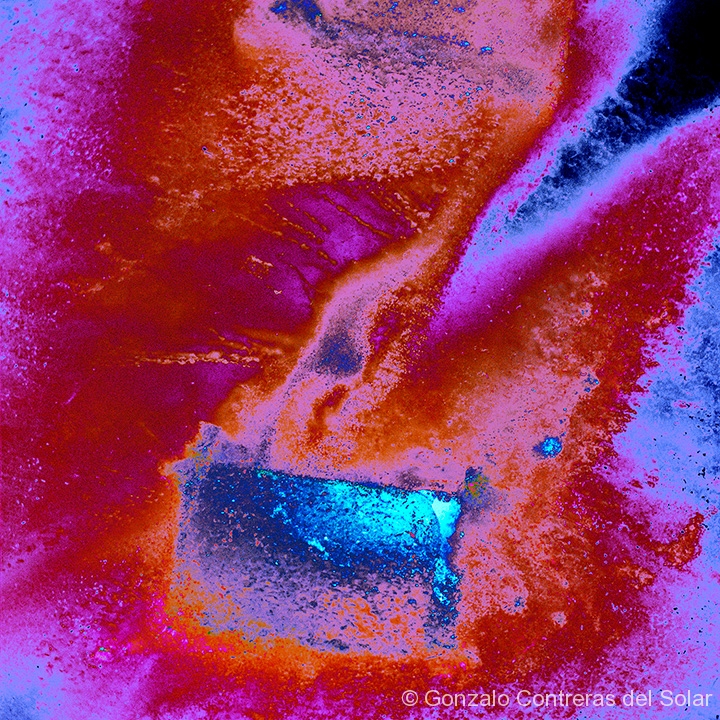

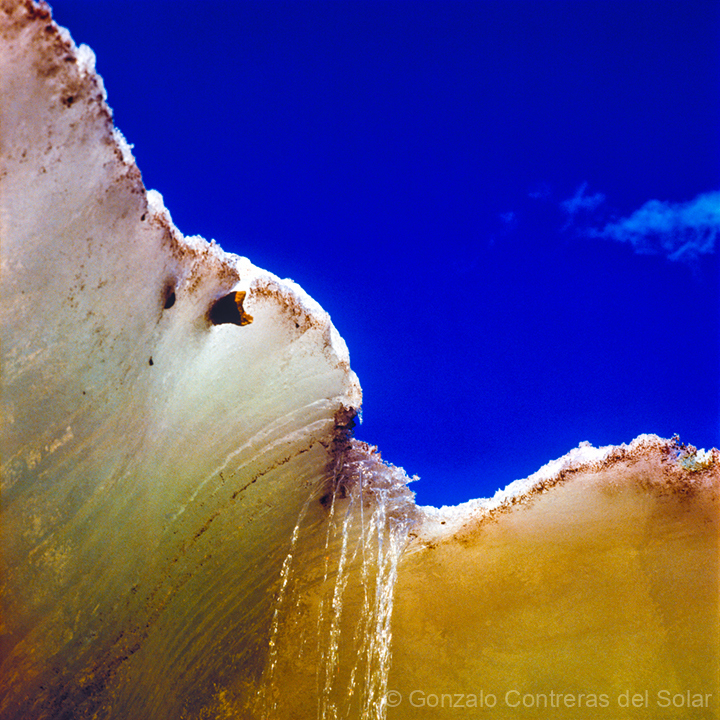




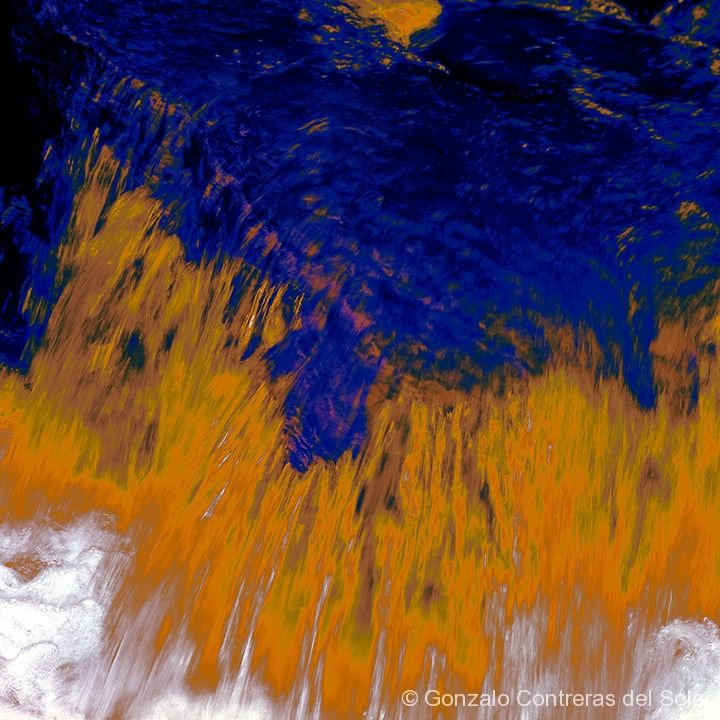
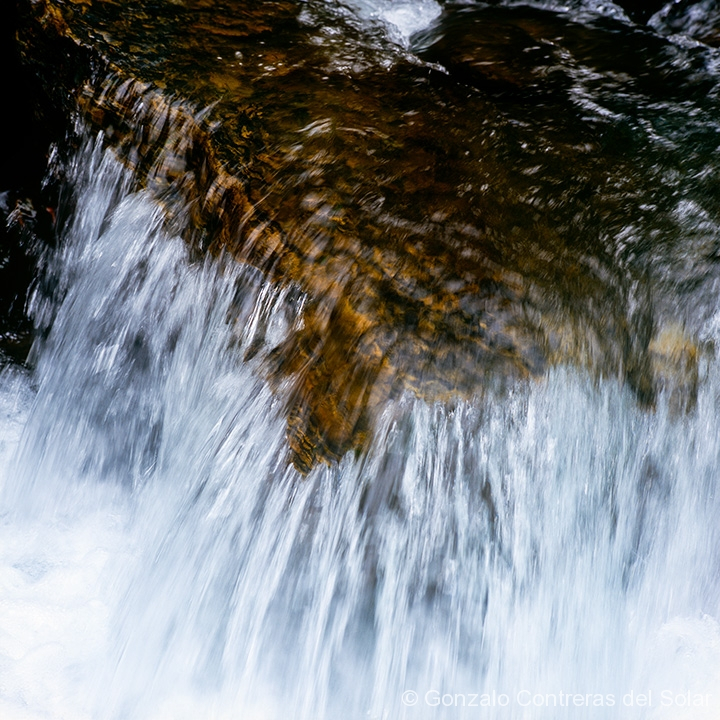
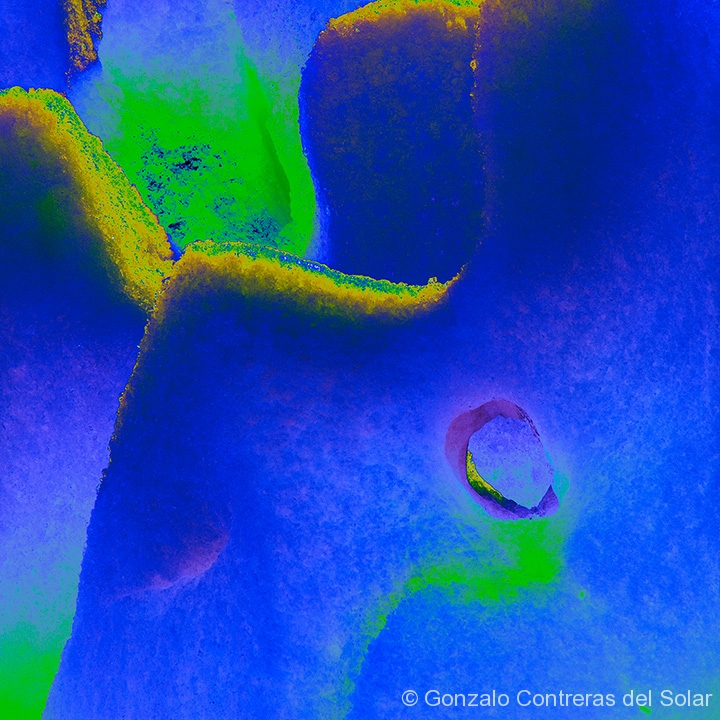


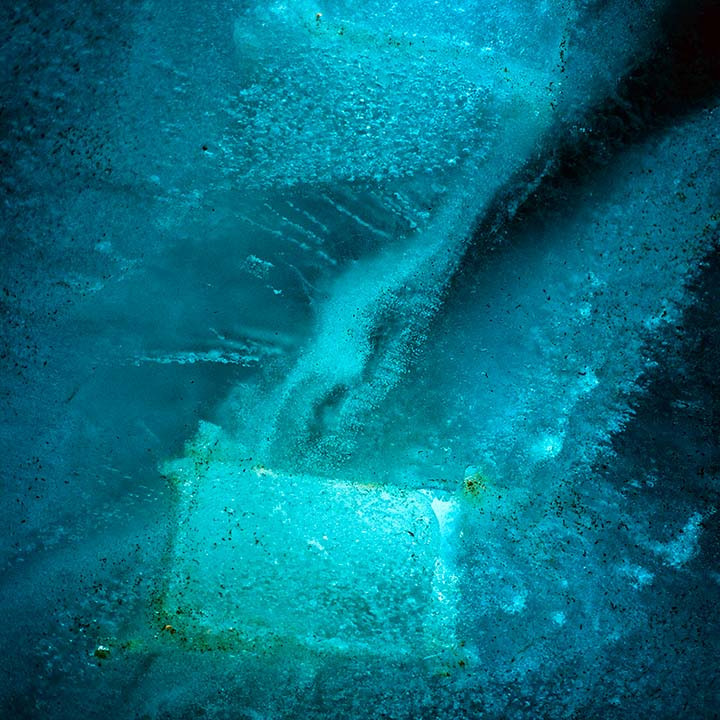
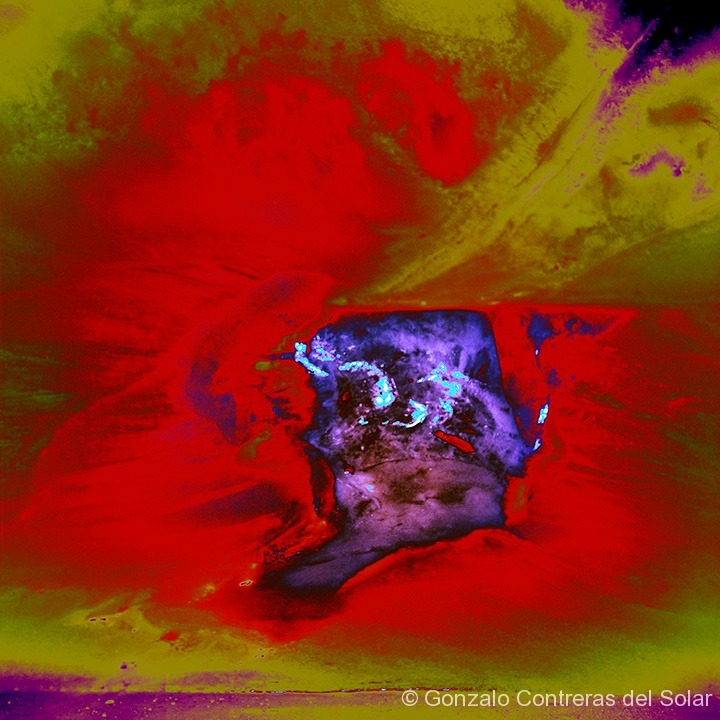

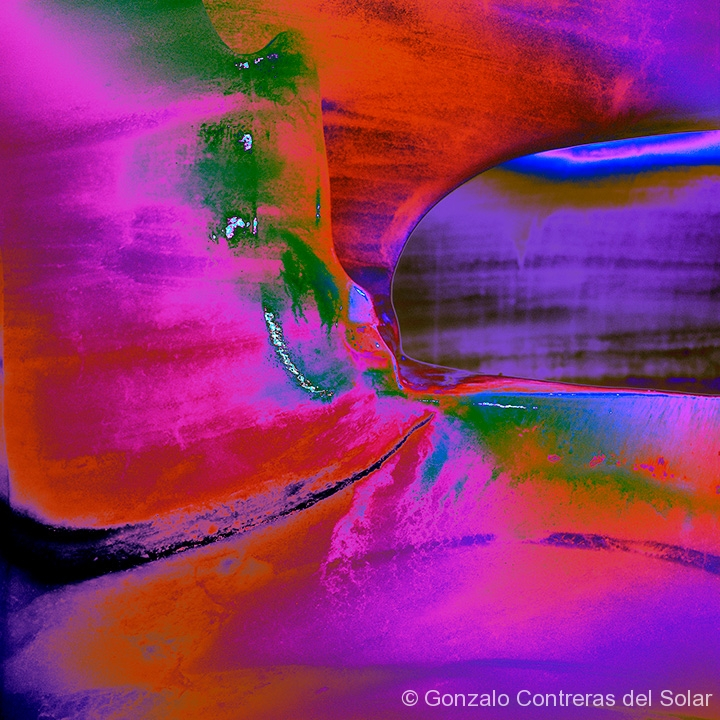



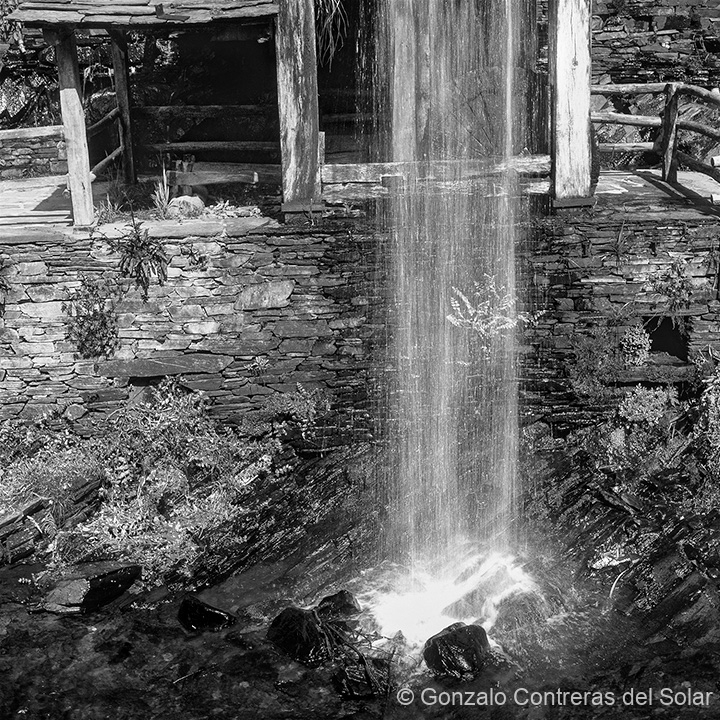

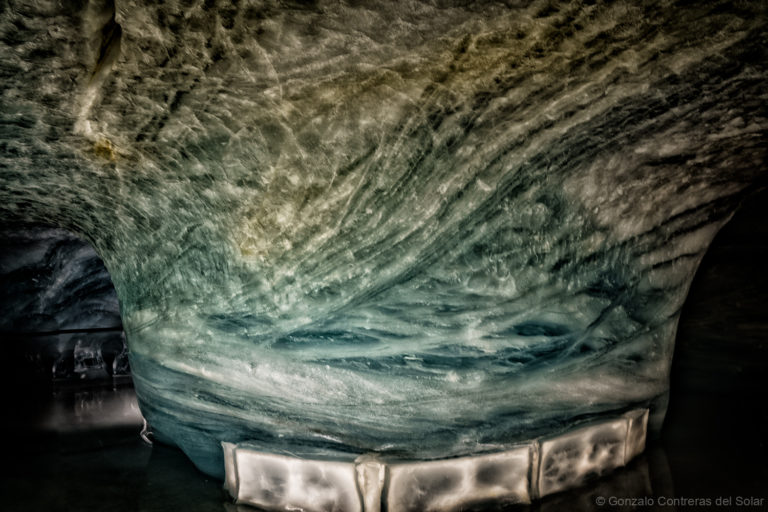
Pingback: Mururata wave - Gonzalo Contreras del Solar
Pingback: The Jungfraujoch - Gonzalo Contreras del Solar